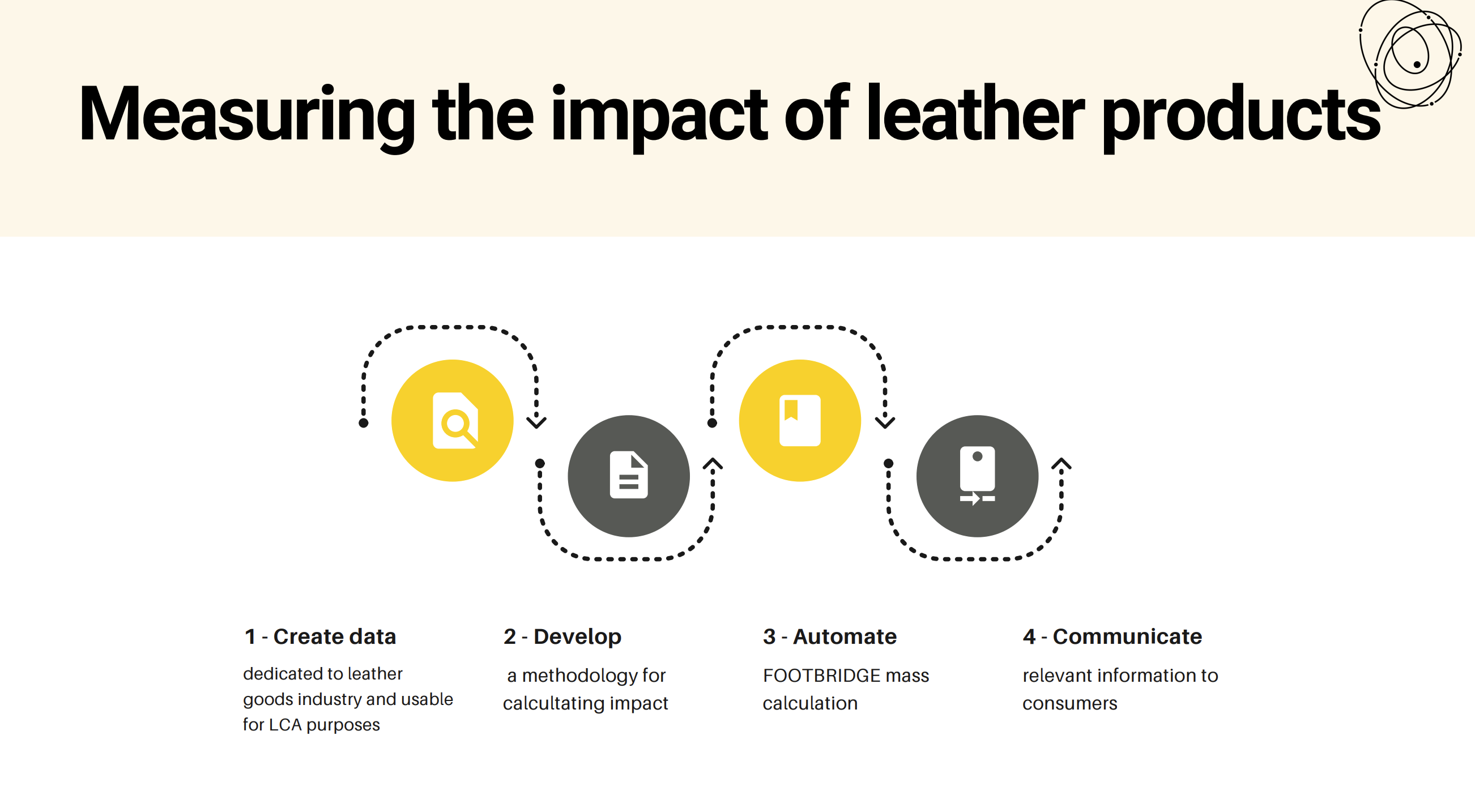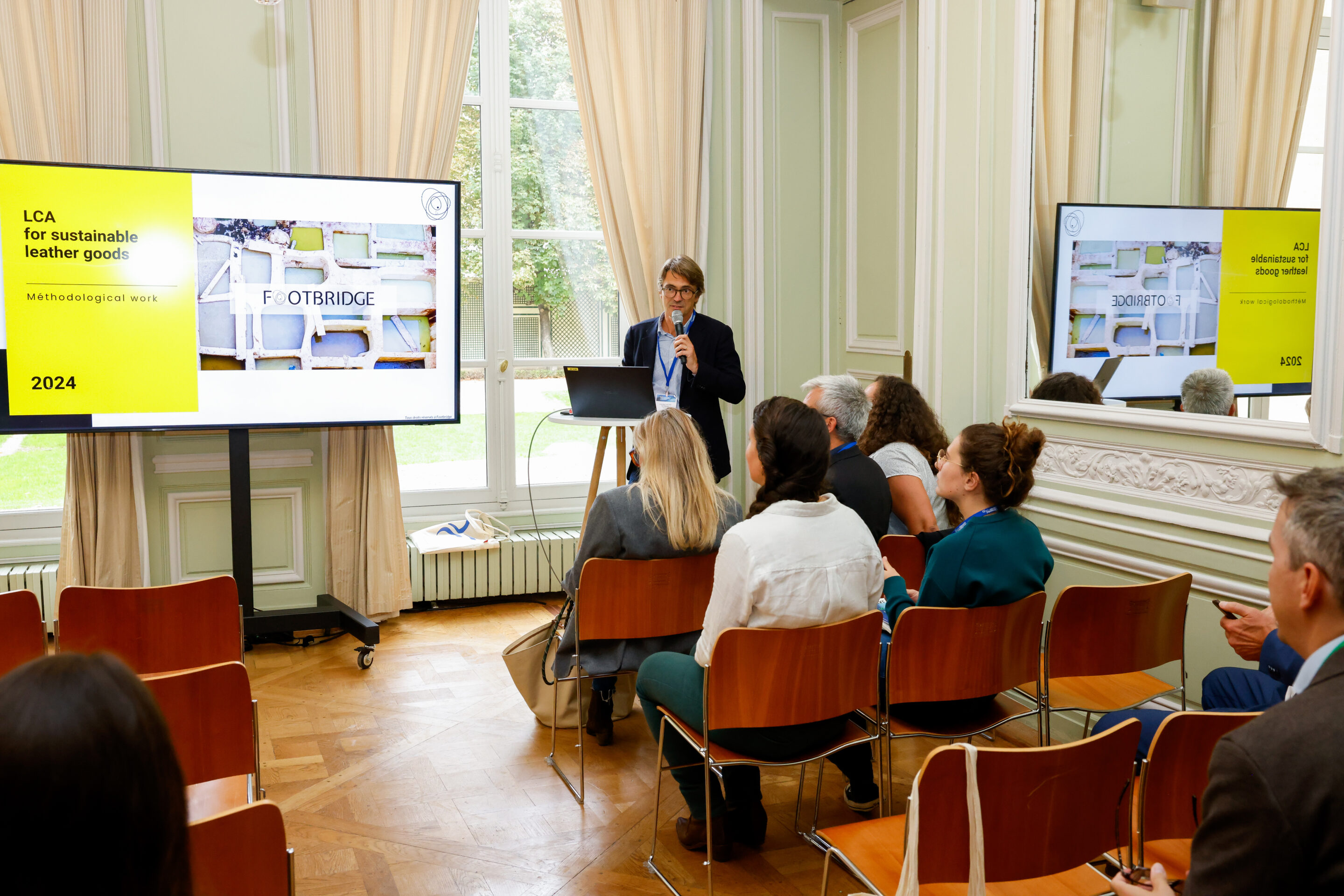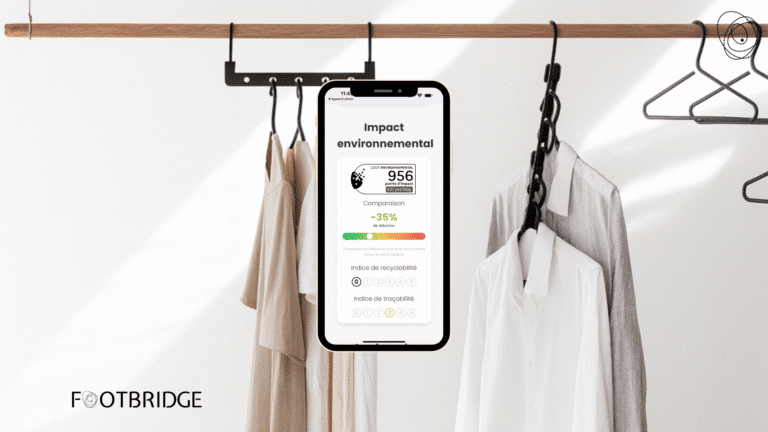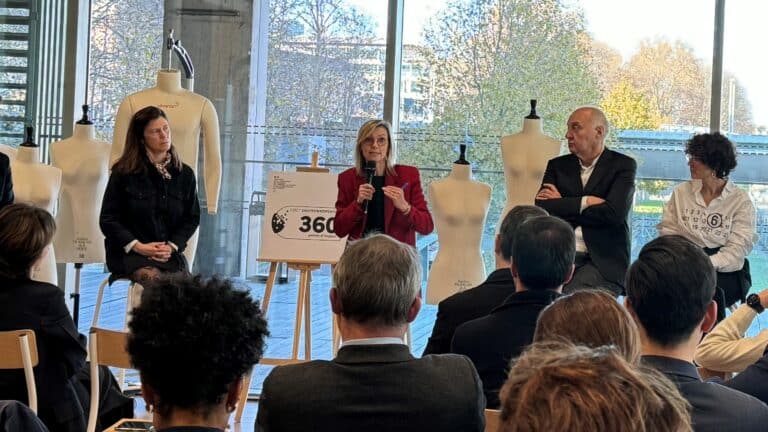On September 9, at the Sustainable Leather Forum in Paris, Louis-Marie Vautier presented the results of methodological work to calculate the environmental impact (LCA) of leather goods. The Footbridge team has been working on this project for over a year, in close collaboration with LONGCHAMP. Intense research was required to overcome the lack of available data on both breeding and tanning.
Unlike clothing, leather goods are not subject to the Agec law or to environmental labelling. This lack of regulatory alignment does not prevent certain players from being concerned about the impact of their industry, which is subject to the same consumer expectations.
The leather industry is directly linked to the meat industry. Even if cattle are not bred for their hides, and these hides are in fact a waste product of the agri-food industry, this raw material, through its transformation process, has a very significant environmental impact.
The high score of a leather bag, if we refer to the results of life cycle analysis, should however take into account its specificities, in particular the product’s lifespan.
It was therefore necessary to collect data in the field, notably from 14 tanneries, in order to model the LCA data required for the calculations. 
Sommaire
LCAs for leather goods now available
In concrete terms, the FOOTBRIDGE platform will be able to calculate LCAs for all types of leather goods, including shoes and leather goods. Starting with the Summer 25 collections, it will be possible to launch mass environmental impact calculations for all references.
Unsurprisingly, just like textiles, the raw material represents the bulk of the environmental impact of a leather bag.
To illustrate, the leather of a leather bag accounts for 86.7% of the hand LCA score (example of a bag weighing 484g – 100% leather and textile lining). Farming is by far the main source of impact. Cattle feed and lifespan are decisive factors in the eco-score of the finished product. The LCA result can therefore vary significantly according to the type of farming, provided there is end-to-end traceability. For the example of this handbag, its environmental score is 11,696 points and its impact on climate change is 92 kg CO2 eq.
These highly significant figures demonstrate the importance of the subject and the need to act. FOOTBRIDGE’s mission, as a platform for impact measurement and eco-design, is to identify areas for progress, measure the results obtained and help improve control of risk factors in the supply chain. With this LCA leather goods project, the FOOTBRIDGE x GOOD FABRIC team has once again demonstrated its ability to innovate in favor of more responsible fashion.
Frequently asked questions
- What is Life Cycle Assessment (LCA) and why is it essential for sustainable leather goods?
Life Cycle Assessment (LCA) is a methodology that evaluates the environmental impacts associated with all stages of a product’s life cycle, from the extraction of raw materials to its end-of-life.
In the leather goods sector, LCA is designed to identify significant environmental impacts, from cattle rearing to leather production. This helps companies in the sector to adapt to sustainable development standards and meet growing consumer expectations for eco-responsible practices.
- How does Footbridge's collaboration with Longchamp promote sustainable innovation in the leather goods industry?
This strategic collaboration has resulted in the creation of an LCA methodology specifically adapted to leather goods, enabling a detailed and accurate assessment of the carbon footprint and 15 other environmental impact factors of leather products.
Footbridge, with the support of Longchamp, has intensified research to overcome the lack of available data, particularly in the fields of animal husbandry and tanning, which encourages the continuous improvement of practices within the leather industry.
- What challenges did the Footbridge teams encounter when implementing LCA in leather goods, and how did they overcome them?
The main challenge was the lack of data specific to the leather goods industry. To overcome this, Footbridge collected data from 14 tanneries to model the data required for LCA calculations.
The result is a platform capable of calculating the environmental impact of all types of leather goods, including footwear and other accessories, thus contributing to sustainable innovation in the industry.
- How is the carbon footprint of a leather bag calculated, and what significance does this have for consumers?
The carbon footprint of a leather bag is mainly determined by cattle rearing, which is the main source of environmental impact, accounting for up to 86.7% of the total footprint for some products.
FOOTBRIDGE uses this data to help companies make the right decisions in product design, and to inform consumers when they make their purchases.
- What is FOOTBRIDGE's mission in the context of sustainable leather goods, and how does it influence the industry?
FOOTBRIDGE’s mission is to provide a platform that not only measures but also helps to reduce environmental impacts in leather goods. By providing accurate LCA data, FOOTBRIDGE helps brands identify areas for improvement and control risk factors in their supply chain.
This commitment helps accelerate the transition to more circular and responsible production practices, which is essential to achieving sustainability goals in the fashion industry.
Calculate the eco-score of your clothing
Master the environmental impacts of your designs with our dedicated platform.
Schedule a demo





